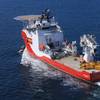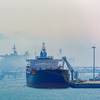Focus On China: Refineries, Pipelines And Vessel Supply
China’s demand for imported oil is, and will, continue to be one of the key influences on the tanker market, according to industry experts Braemar Shipping Services plc. Demand growth in the country has progressed at an unprecedented pace over the last decade, a pattern universally anticipated to continue. This additional demand will increase China’s dependence on imported crude with beneficial knock-on effects for the tanker industry.
Refining capacity
Oil and Gas Journal estimates that Chinese refining capacity stood at 8.1m bpd as of 1st January 2011, exhibiting growth of 54% over the last decade. With a developing, urbanising and growing population whose oil consumption is ever burgeoning, we do not expect growth of either parameter to taper in the near future. Capacity growth projections for the next five years vary from a low of 2.0m bpd, up to a maximum of 6.0m bpd. Braemar Shipping Services plc anticipates that expansion of between 35% and 45% of current capacity will be achieved over this period.
Feeding this refinery growth will increase China’s crude import demand, as domestic production remains flat. Of course, additional throughput hinges on potential utilisation rates, which in turn feeds from demand, whether it stems from domestic needs or is international with subsequent product export. Domestically speaking, China’s GDP growth is unlikely to fall below 7% over the next five years. Energy is critical to this growth and consequently oil demand is set to rise rapidly. Therefore we project that utilisation rates will be maintained at a high level.
China’s reliance on crude import is climbing. It imported 54% of crude feedstock in 2010, exceeding its preferred level of 50% for the second year in a row. The Braemar Shipping Services plc model output anticipates that reliance will intensify further over the next decade, reaching 66% in 2015 and 70% in 2020.
Pipeline construction
China has invested substantial amounts in pipeline construction in recent years, with consequences for imports. While the pipelines offer a substitute for seaborne crude trade and could therefore be interpreted as deleterious to the tanker industry, Braemar Shipping Services plc argue that this effect will not be pronounced, as the volume of crude that will be imported via these pipelines is dwarfed by the additional crude requirement mustered by the expansion of the refining industry.
The construction of a 440k bpd pipeline from Western Myanmar to China’s Yunning province began in September 2010 and is pencilled for completion by the start of 2013. The pipeline will improve China’s access to Middle East oil, bypassing the congested Malacca Straits. Crude that would otherwise have transitted the 5,000 mile route from Ras Tanura to Zhanjiang will now travel only 3,250 seaborne miles to the new terminal at Kyaukpu, which will be able to accept VLCCs. On a round trip basis a voyage is cut by circa 10 days. Assuming the pipeline operates at full capacity, 22m tonnes of oil will take the shorter route, a total reduction of 38,000 million tonne miles per annum, or two VLCCs per year. Thus the effect on the tanker industry appears minimal. The crude to be imported still represents additional demand; the primary refinery the pipeline will serve is new and therefore these imports are incremental. Further, increasing accessibility of mainland China to crude has the potential to spur the creation of more refineries and therefore crude demand.
The Eastern Siberia Pacific Ocean pipeline is an instrumental component in augmenting Russian crude exports to China. Phase one of the project is complete and runs from the oil fields in Eastern Siberia to Skovorodino in Russia’s Far East with a capacity og 600k bpd. Crude is then either transported to China through the Daqing Spur Pipeline or via rail to the export terminal at Kozmino. Phase two, scheduled for completion in 2012, will bypass the rail component of the supply chain and increase capacity, initially to 1.2m bpd and at some subsequent point to 1.6m bpd. It is envisaged that once complete, 300k bpd crude will be transported to China, 600k – 700k bpd will be used by Russian refineries and the the remaining 600-700k bpd will be bound for international destinations.
Rosneft and CNPC are building a 260k bpd refinery at Tianjin, 70% of the feedstock for which will be delivered via the ESPO pipeline. Assuming a 90% utilisation rate, this indicates that this refinery will consume half of crude that will transit the pipeline with the remainder headed for other refineries in the region. With refinery capacity expansion projected to achieve somewhere between 2 and 6m bpd over the next five years, Braemar Shipping Services plc anticipates that refining capacity growth can absorb ESPO imports without a noticeable effect on the crude tanker industry. Furthermore, with 600-700k bpd blueprinted to be exported from Kozmino, potential for new routes exists. These routes are likely to be of benefit mainly to the aframax market, and, to a lesser extent, the suezmax market.
Vessel Supply
As of 1st May 2011, the double hull VLCC fleet stood at 530 vessels, of which 9.1% were Chinese owned (48 vessels). Of the orderbook of 158 vessels (29.4% of the trading fleet), 19 (12.0%) are Chinese owned. Assuming 100% delivery, the percentage of Chinese owned vessels will increase to 9.7% of the fleet by end 2014. Of the 48 vessels in the Chinese fleet, 30 (62.5%) have been built in the last five years compared to 38.6% of the non-Chinese fleet. Over the next four years, based on the current orderbook the Chinese fleet will expand by 39.6%, whereas the non-Chinese owned portion will enlarge by 28.8%. These figures illustrate the vigour with which Chinese VLCC ownership has grown in conjunction with the country’s increased dependence on oil imports, and the momentum with which it is projected to continue in the next three years. Beyond the bounds of the current orderbook, medium to long term growth remains to be seen; will Chinese owned newbuild orders slow with the 50% import target ticked off (see below), or will Chinese owners continue to invest in order to gain an even bigger slice of the pie?
The Chinese government is aiming for 50% of seaborne oil imports to enter the country on Chinese vessels. Braemar Shipping Services plc tanker model output suggests that 84 dedicated VLCCs would have been sufficient to meet 100% Chinese demand in 2010. As of the end of the year, there were 48 Chinese owned VLCCs (including 5 single hulls) suggesting that Chinese vessel capacity is easily sufficient to meet the 50% goal. We anticipate demand to grow to 130 vessels in the next four years, with Chinese vessel supply set to increase to 73. Again these projections indicate that Chinese vessel supply will, in theory, be sufficient to service 50% of seaborne imports..
Braemar Shipping Services plc’s analysis of VLCC spot fixture data for vessels suggests that, in 2010, 50.4% of VLCC cargoes were transported on Chinese owned vessels, a 35.4% increase from the 15.0% recorded in 2004. In Q1 2011 however, a 3.4% decrease has been observed with the figure standing at 47%, marginally below the target of 50%.
Braemar Shipping Services plc anticipates that China will succeed in its aim of carrying half of its import of Chinese owned vessels, and has the capacity to exceed this. However given the sheer scale of Chinese demand, significant potential for China-bound cargoes caroges will remain, both on the spot and timecharter markets. Chinese VLCC ownership has become more widespread in the last five years and the current orderbook indicates that this will continue in the short to medium term.
Source: Braemar Shipping Services plc












